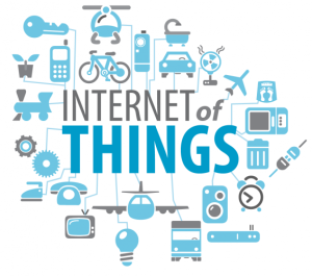The Internet of Things (IoT), as defined by Wikipedia, is the network of physical objects or “things” embedded with electronics, software, sensors, and network connectivity, which enables these objects to collect and exchange data. The IoT allows objects to be sensed and controlled remotely across existing network infrastructure, creating opportunities for more direct integration between the physical world and computer-based systems, and resulting in improved efficiency, accuracy and economic benefit. Each thing is uniquely identifiable through its embedded computing system but is able to interoperate within the existing Internet infrastructure.
In short, if we look at the objects we use in everyday life – from our phones, to our laptops, to even our copy machines or printers at work – each is able to collect and potentially exchange vast amounts of data. While the capabilities of these devices and objects to collect data and exchange data will likely improve our daily lives, it is also important to examine how to protect the privacy and security of the information and data which is collected and shared.
The Fixing America’s Surface Transportation Act (FAST Act) includes a number of provisions related to privacy, including an amendment to the Gramm-Leach-Bliley Act (GLBA) as well as the enactment of the Driver Privacy Act of 2015. Interestingly, the FAST Act also requires a report on the potential of the IoT to improve transportation services in rural, suburban, and urban areas.
Specifically, Section 3024 of Title III, requires the Secretary of Transportation to submit a report to Congress not later than 180 days after December 4, 2015 (the enactment date of the FAST Act). The report, presumably to address the issues discussed above, is to include (1) a survey of the communities, cities, and States that are using innovative transportation systems to meet the needs of ageing populations; (2) best practices to protect privacy and security, as determined as a result of such survey; and (3) recommendations with respect to the potential of the IoT to assist local, State, and Federal planners to develop more efficient and accurate projections of the transportation.
While it is unclear exactly what information will be captured in the report, it’s clear the drafters of Section 3024 have recognized the importance of data privacy and security while utilizing the IoT to improve transportation. On a more personal note, I have to believe I am not alone in hoping that the report will finally address (and correct!) the traffic patters related to my daily commute!




 i
i


